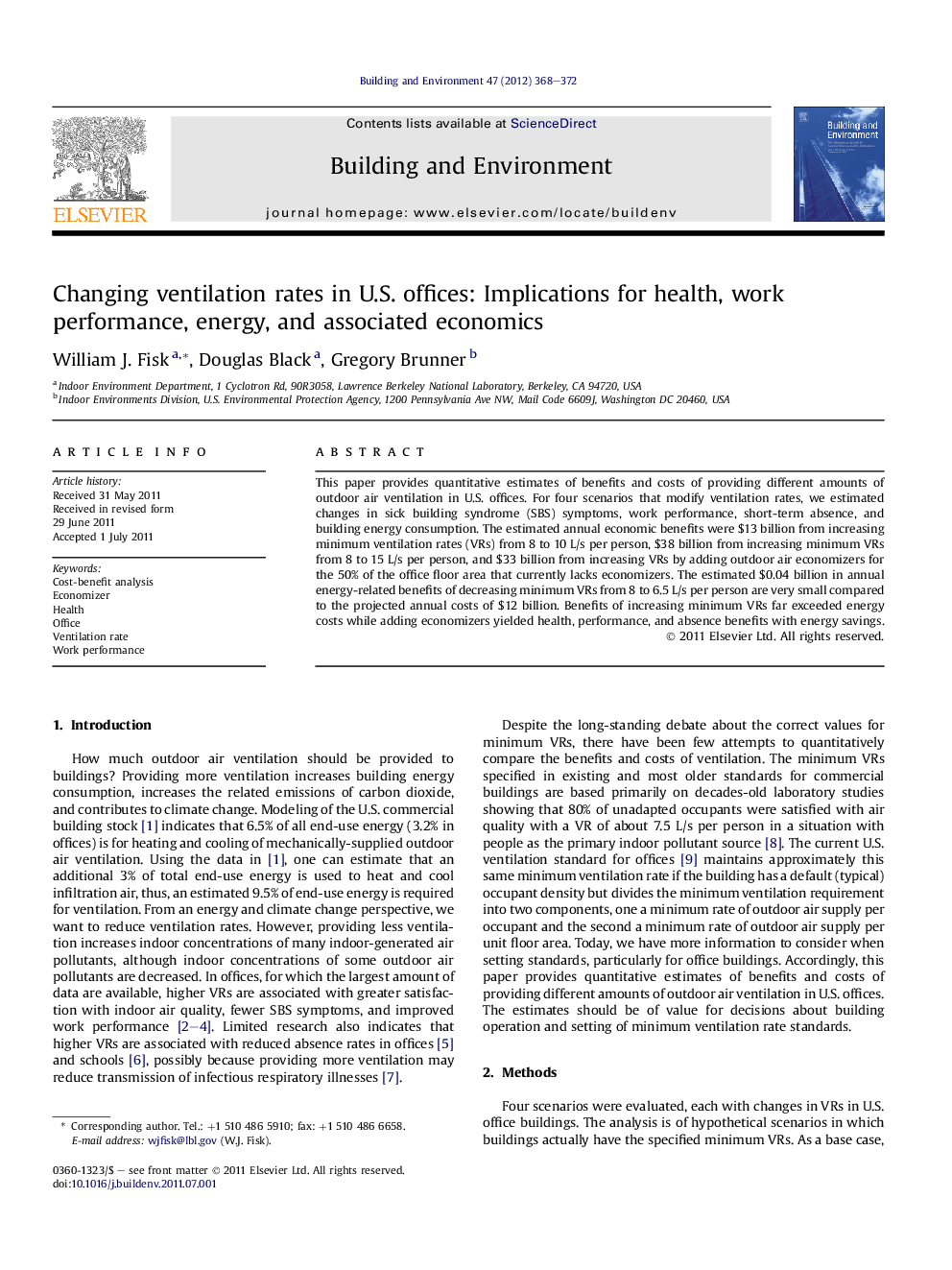| Article ID | Journal | Published Year | Pages | File Type |
|---|---|---|---|---|
| 248618 | Building and Environment | 2012 | 5 Pages |
This paper provides quantitative estimates of benefits and costs of providing different amounts of outdoor air ventilation in U.S. offices. For four scenarios that modify ventilation rates, we estimated changes in sick building syndrome (SBS) symptoms, work performance, short-term absence, and building energy consumption. The estimated annual economic benefits were $13 billion from increasing minimum ventilation rates (VRs) from 8 to 10 L/s per person, $38 billion from increasing minimum VRs from 8 to 15 L/s per person, and $33 billion from increasing VRs by adding outdoor air economizers for the 50% of the office floor area that currently lacks economizers. The estimated $0.04 billion in annual energy-related benefits of decreasing minimum VRs from 8 to 6.5 L/s per person are very small compared to the projected annual costs of $12 billion. Benefits of increasing minimum VRs far exceeded energy costs while adding economizers yielded health, performance, and absence benefits with energy savings.
► Ventilation affects performance, sick building syndrome symptoms, absence, and energy. ► Office ventilation rates exceeding standards projected to save $13B to $40B annually. ► Estimated benefits of increasing office ventilation rates far exceed energy costs. ► Increased economizer use projected to save $33B annually, and save energy.
